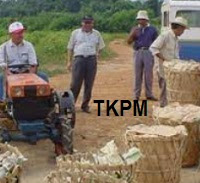The economists agree that price controls can create market distortions. When prices are fixed below the market equilibrium actually the producers are discouraged from producing because of low margin and can lead to shortages as later the consumers buy more due to lower prices. This imbalance can disrupt the supply chain and lead to inefficiencies. Price controls can reduce the incentives for farmers to produce more food. When they are not able to fetch fair market prices for their products, they may reduce their output or shift to other more profitable crops. This, in turn, can lead to reduced overall food production. In some cases, price controls can lead to a focus on quantity over quality. Producers may cut costs and compromise on safety and quality standards to maintain profitability when prices are constrained. This is bad for health and nutrition. It is no secret that price controls can lead to black markets or illegal trading. When prices are artificially low, a parallel market with higher prices can emerge, which can exacerbate supply chain issues and hinder government efforts to ensure food security. Price controls do not address the root causes of food insecurity, such as logistical challenges, post-harvest losses, and poor infrastructure. These structural issues need to be addressed separately to improve food security. Price controls can lead to the misallocation of resources. When the government intervenes in the market to set prices, it may be diverting resources that could be better used in other sectors, such as agriculture infrastructure or technology improvements. It is not rocket economics that price controls often provide short-term relief but do not address long-term food security concerns.
Sustainable food security requires investment in agriculture, research, infrastructure, and education. Implementing and enforcing price controls can be administratively challenging. It requires significant government resources and can be prone to corruption. Market participants may react to price controls by reducing investments, innovations, or production. This can have long-term negative effects on the food supply. Price controls may not account for global market dynamics. Food prices are often influenced by international factors such as weather, trade policies, and global demand. Local price controls may not effectively shield consumers from these global influences. Instead of relying solely on price controls, a more comprehensive approach to achieving food security should include measures like, supporting farmers with infrastructure, technology, and training to increase production and efficiency, and creating efficient and transparent markets that allow supply and demand to determine prices. Implementing targeted social safety nets that provide assistance to those most in need, rather than trying to control prices for everyone is also an option. Additionally, we can encourage diversified food production and sustainable agriculture practices. Not to mention implementing risk management strategies to address the impact of external factors on food prices. Other measures include investing in research and development to improve crop yields and resilience, and improving transportation, storage, and distribution infrastructure to reduce post-harvest losses and enhance food availability. While price controls may be tempting as a short-term solution, they are not a sustainable strategy for achieving food security in the long run. A combination of market-oriented policies and targeted interventions is generally more effective in addressing the root causes of food insecurity. In fact, price controls hinder food security. Thanks....
SELAMAT HARI RAYA 1 SYAWAL 1445H/ 2024...
M Anem,
Putrajaya,
Malaysia.
(January 2024).
Posted from,
Taman Cendana Melaka.
(2 syawal 1445H)





No comments:
Post a Comment